Exposed: The relationship between al-Qaeda and Iran
Further proof that it was Iran we should have invaded after September 11th, not Iraq. Instead, President Obama, after he took office in 2009, aided, abetted and nuclear arm the terror state. Iran, then and now, is the real enemy.
Revealing the relationship of al-Qaeda’s Minister of Information with Iran
By Huda Saleh Al Arabiya, Riyadh Thursday, 21 September 2017
US President Donald H. Trump’s speech to the UN General Assembly has re-highlighted Iran’s role in sponsoring radical terrorist groups in the Middle East, especially al Qaeda.
Al Arabiya reviewed the latest issue of the “Voice of Jihad” magazine, issued in 1428/2007, revealing more about the alliance of Tehran with Osama bin Laden, and the provision of logistical support to the fighters of the organization in training, shelter and care.
The issue highlighted a new and important name who is one of the most prominent al-Qaeda ideologues in Saudi Arabia, who has not been publically named before which revealed the extent of bilateral cooperation between Tehran and al-Qaeda.
So who is this ‘important’ man?
The Minister of Jihad Information
Issa bin Saad al-Aoushen or as his comrades call him “the Minister of Jihad Information” or “the keyboard fighter, was killed during a security raid on the house of the leader Saleh al-Awfi in Riyadh in 2004.
Al-Aoushen joined al-Qaeda fighters in Afghanistan shortly before the September 11 attacks, after consulting with the founder of al-Qaeda in Saudi Arabia, Yusuf al-Ayeri.
From the beginning, Al-Aoushen was very active in cyber terrorism considering that he had lived through the period of the “Afghan Jihad” and the “Chechen issue” until he joined al-Qaeda in Afghanistan. The leader of al-Qaeda in the Arabian Peninsula known as Abdul Aziz appointed him as media officer for the organization’s publications, following the killing of al Ayeri during security clashes in the northern city of Ha’il in June 2003.
According to the “Tawheed and Jihad” fundamentalist platform on the biography of the media spokesman for Al-Qaeda, al Aoushen also known as Abu Said Al-Qaoud stood out in the field of jihadist media as he “Believed in the importance of the role of the media in attracting supporters for the Mujahedeen. He put all of his efforts in this field, where he worked hard and persevered with Sheikh Shaheed Yousef al-Ayeri in the Studies website to advertise for the organization and recruit fighters.
After the killing of al-Ayeri, Al Aoushen supervised the Center for Islamic Research Studies website. He was also the editor-in-chief of the “Voice of Jihad” magazine, commissioned by al-Qaeda leader in Saudi Arabia Abdul-Aziz al-Muqrin.
In addition, he was the supervisor of the Al-Battar Camp, a key operative of al-Sahab’s main media arm. He was also the commentator for the famous Al-Sahab edition “Badr Al-Riyadh”.
Four days after the raid on the Seville cell on May 8th, 2003, one of the largest terrorist attacks in the Kingdom took place, where three residential complexes (Granada, Seville and Hamra) were blown up. The Saudi government, following investigations, released a list of 26 terrorists who are, according to the Saudi Interior Ministry, the most wanted men in Saudi Arabia. Al Aoushen, the media spokesman for the Al Qaeda was among those names.
Al Aoushen and Tehran
The bilateral relationship between al-Qaeda media spokesman and Tehran started just after the events of September 11 and on the eve of the US attack on the Taliban and Al-Qaeda in Afghanistan, taken out by al-Qaeda fighters and other radical Islamic organizations as a hideout and a blind spot to escape being tracked by the US intelligence services.
Al-Aoushen was stationed in the Zabol district, one of the districts of the Sistan and Baluchistan provinces. The coordinator in that leadership was Yusuf al-Ayeri, the guard of Osama bin Laden, who was one of five people in 1992 who traveled on Ben Laden plane from Afghanistan to Sudan, through Iran, where the plane landed for hours before completing its route.
According to his friend Majid Saeed al-Qahtani, nicknamed “Ali al-Maki” (killed in a security raid on one of the most prominent al-Qaeda cells in the province of Ras al-Qassim in 2005): “In the Iranian city of Zabol, Al Aoushen supervised the Al Qaida fighters stationed in Iran through al-Ayeri, who was the main link between bin Laden and fundamentalist leaders in the Arabian Gulf, where they all communicated via internet with al-Qaeda leaders in Iran and Pakistan.”
According to the testimony of “Ali al-Maki”, published in the “Voice of Jihad” magazine: “The martyr, may God have mercy on him, arrived in Iran with a group of mujahedeen. They eagerly waited for a long time to be able to enter but the road was cut off.”
The interesting thing about the letter of of Al-Qahtani, which was titled “Knight of the Jihadist Media”, that it revealed that Al Aoushen was in charge of providing logistical support and receiving donations, as well as receiving newly recruits and those leaving Afghanistan to avoid US air strikes. This proves the extent of Iran’s involvement in supporting terrorist groups and becoming a transit station for fighters who want to join al-Qaeda.
On Al Aoushen, al Maki said: “In Iran, Al Aoushen provided his brothers the Mujahedeen with so-called logistical support such as receiving donations. He also hosted the Mujahedeen brothers who are coming to jihad or those who are leaving Afghanistan. He also told me, God have mercy on him, that one day Sheikh Youssef Al Ayeri picked up the phone, as if he sensed that the brothers were eager to cross the borders and were fed up with Iran and its restrictions, so he encouraged them and explained to them the virtue of patience and Jihad in a phone communication that lasted a long time.”
In the same context, the Saudi Interior Ministry announced in 2009 a list of 85 security suspects outside the Kingdom, 83 of them were Saudis and two were Yemenis. Some of them turned themselves in after securing their return and subjecting them to the regulations.
Qarawi, the founder of the Abdullah Azzam Brigades
Is the 13th suspects in the cell 32 which planned to carry out a terrorist operation in Saudi Arabia. During the cell adjudication sessions in September 2014, he revealed that he had received weapons and explosives training courses with al-Qaeda in Afghanistan. He carried over 106,000 riyals from one cell member and transferred it to Iran. He handed over a hundred thousand riyals to the coordinator of al-Qaeda in Iran, Saleh al-Qarawi, who is also listed on the list of 85, in return for the extradition of one of the wanted in Waziristan for the price of 6 thousands Riyals.
Qarawi is the founder and leader of the so-called Abdullah Azzam Brigades, which began its military activity in 2004 with limited operation and announced its formation and composition after the 2009 Gaza war. They were based in the Palestinian refugee camps in Lebanon.
Al-Qarawi went to Iran and received extensive training in electronics and its use in bombing operations. He made Iran a center of his operations and served as a mediator between the leaders of the organization and its members. He worked to unify the organization’s efforts in Iraq and Lebanon. He is a deputy to al-Qaeda facilitator Yasser al-Souri and has strong links to elements of the organization based in the region who are seeking to implement terrorist attacks.
The Azzam Brigades claimed responsibility for the double attack in November 2013 near the Iranian embassy in Lebanon, which took place under the intelligence and the directions of Iran and the Syrian regime.
Al-Qarawi was traveling between Iran and specifically from his residence in Mashhad and Waziristan until he was seriously injured in the arm in the summer of 2012 and was taken prisoner by Saudi Arabia as the number 43 wanted on a list of more than 85 wanted Saudis.
Through their two factions, Saraya Zied al Jarrah and Saraya Youssef al Abiri, the Brigades carried out 9 operations, most notably an attack on an American barge which was anchored in Aqaba in August 2005.
The New York Times revealed in January 2002, special documents obtained from US intelligence officials which confirm communication between the leader of the military wing of Hezbollah Imad Mughniyah, Iran and bin Laden during the nineties.
According to the newspaper: “Mughniyah held at least one meeting with bin Laden, obviously aiming to discuss cooperative relations with him, according to data presented to US federal courts by a former aid close to bin Laden, the Sudanese national Jamel al Fadhl who broke away from al-Qaeda and said in his testimony before the American Intelligence: “Saif al-Adl and another group went to the south of Lebanon in the early 1990s and were trained by Hezbollah.”



 Colleen Hufford beheader by ISGOC mosque attendee Yakeem
Colleen Hufford beheader by ISGOC mosque attendee Yakeem






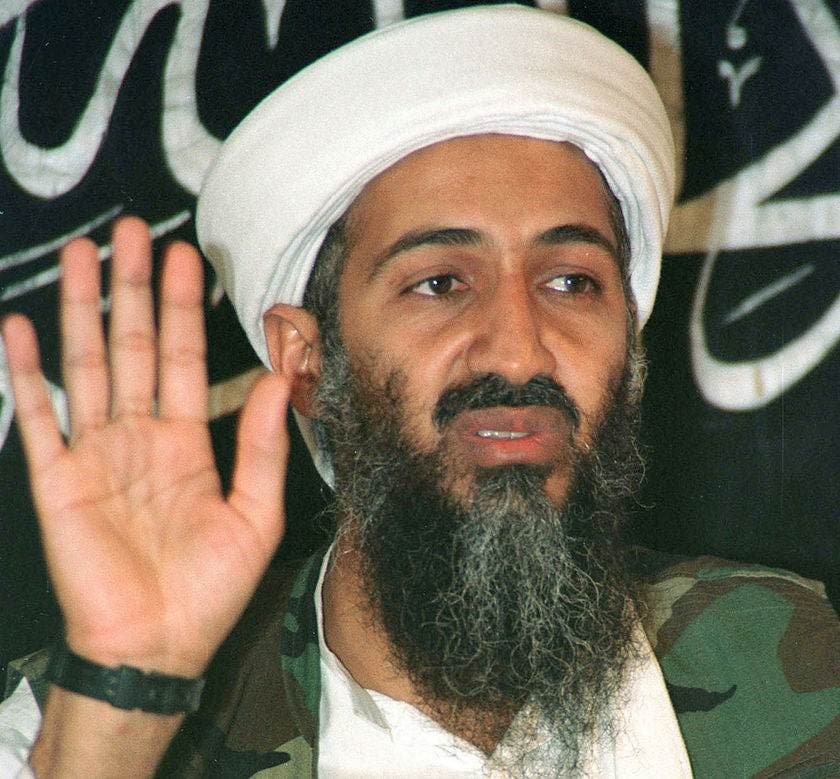 Osama bin Laden
Osama bin Laden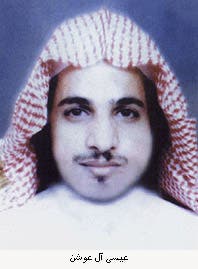
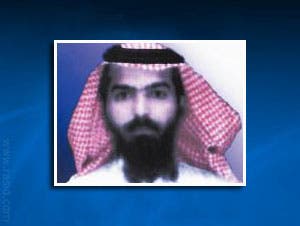 Yusuf al-Ayeri
Yusuf al-Ayeri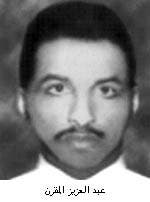 Abdul-Aziz al-Muqrin
Abdul-Aziz al-Muqrin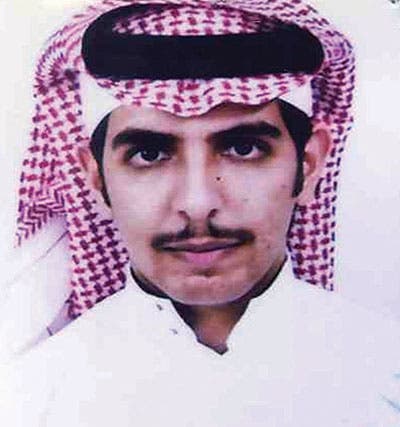 Saleh al-Qarawi
Saleh al-Qarawi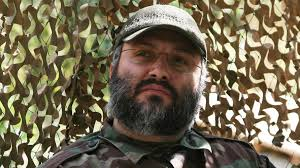 Imad Mughniyah
Imad Mughniyah











